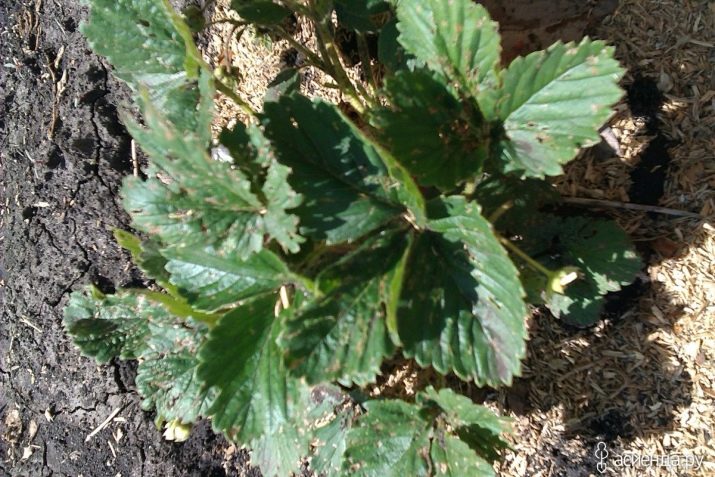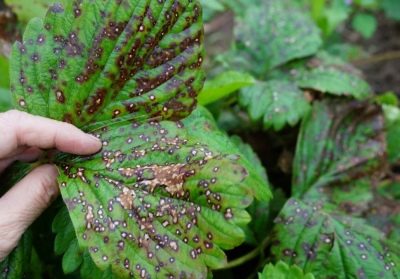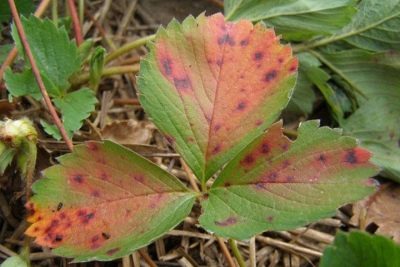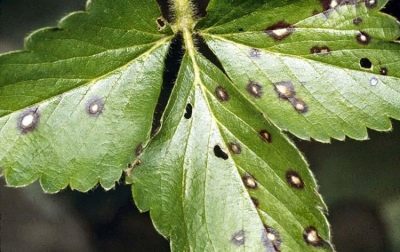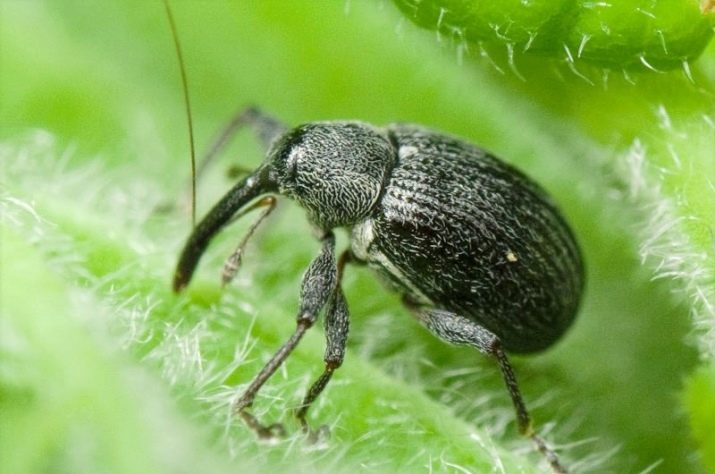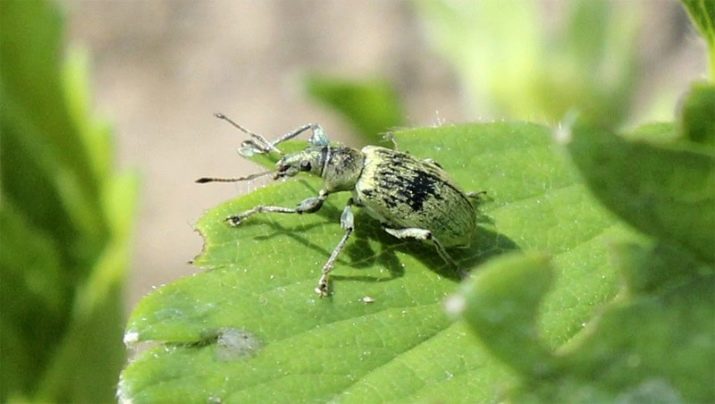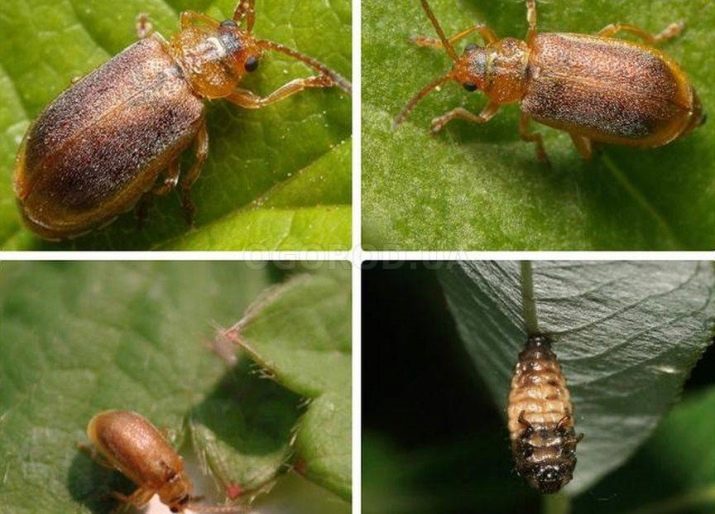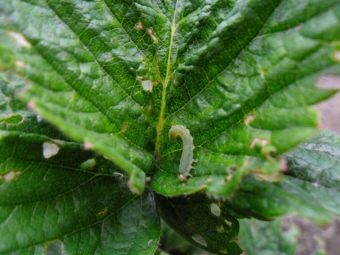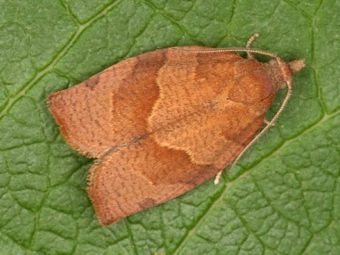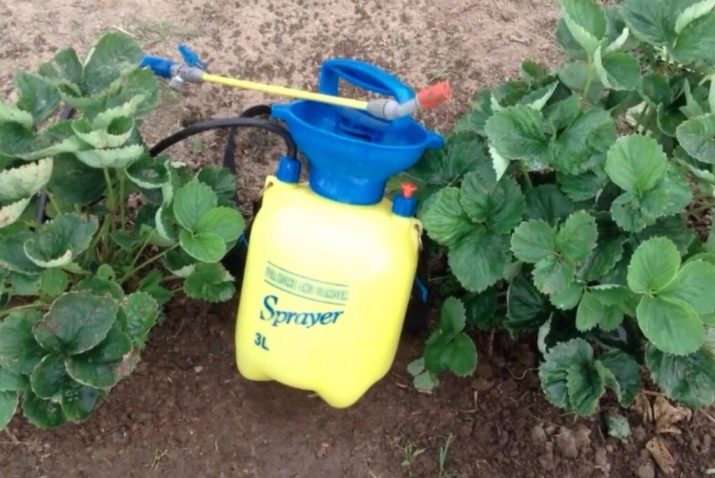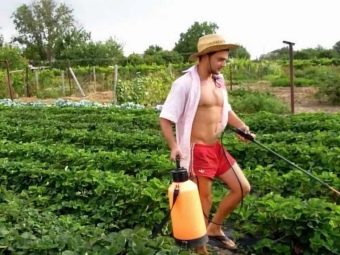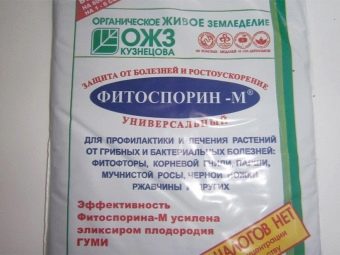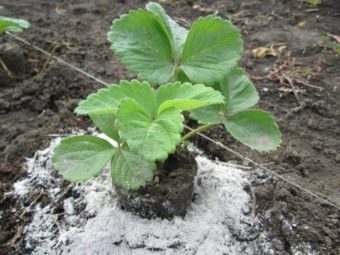What if the strawberry leaves in the hole?
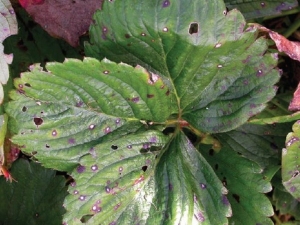
The appearance of small holes on the leaves of strawberries is a fairly common and unpleasant phenomenon.It is not seasonal and can occur throughout the growing season. The age of the plant is also not an obstacle to the appearance of holes, which is why perforations are equally susceptible to both young and mature plants.
Causes of holes in the leaves
Leaky leaves are the result of the harmful activity of insect pests or they appear due to plant disease. In rare cases, mechanical damage to the leaf plates can cause holes. This occurs as a result of strong wind or exposure to large hail. However, in this case, the shape and size of the holes will be rather ragged and uneven, and it is extremely difficult to confuse them with holes of biological origin.
Diseases
The cause of the holes are fungal diseases. The most common strawberry shoots are dendrofomozu, ramulariasis and anthracnose. All three diseases are varieties of the fungal disease, known as spotting.
- Anthracnose or black spot (Latin Colletotrichum Acutatum Simmonds) dangerously long incubation period and damage to the whole plant at once. It is caused by the fact that fungal spores can easily be transported by wind to neighboring plantations, infecting more and more new shoots. The first sign of illness is the appearance of dark scorch, like a burn or an ulcer. Over time, the damaged areas dry out, crack and spill out, forming numerous holes instead of themselves. The most favorable environment for the causative agent of the disease is hot and humid weather. In addition to airborne mode, plant contamination can occur through infected implements, seedlings and water.
- Brown spot also often found on strawberry plantations. The disease begins with the appearance of poorly visible spots that quickly become red-brown in color and rapidly spreading over the surface of the sheet. Over time, the spots acquire a brown tint, dry out and spill out, forming holes. In addition, the spots often grow and merge, as a result of which there is almost complete damage to leaf blades and their dying off.
- Dendrofomosis (brown spot) the signs are quite similar to brown spotting, with the only difference that its spots are often angular forms. The disease manifests itself in July-August and is often provoked by a large amount of rain. The disease significantly reduces the immunity of plants and makes them most vulnerable to viral and infectious diseases.
- White Spot or Ramulari also has a fungal nature and is characterized by the appearance of white, with a bright brown border, spots, which eventually dry out and crumble. At the onset of the disease, the spots are brownish and small in size. Over time, the middle of the spot turns white and crumbles, leaving behind a hole. Fungal spores are characterized by high survivability and are capable of spreading in any weather. However, when watering strawberries with cold water increases the likelihood of the disease. The disease can appear at any stage of plant development, including the early spring, when the leaves are just beginning to appear.
With a particularly strong lesion of plants with ramulariasis, the harvest can be completely lost. In addition to leaf cover, all aboveground parts of the plant, including whiskers, flower stalks and petioles, are prone to white spot.
Pests
However, not only diseases cause holes: very often the perforation and death of the leaf cover occurs through the fault of insects.
- Raspberry-strawberry weevil (Latin Anthonomus Rubi) is a small black-brown beetle, reaching 3 mm in length and eating strawberry leaves, flowers and buds. The weevil female overwinters in foliage and with the advent of the first spring peduncle begins to lay eggs.One egg is laid in each bud, and for the season one individual can make 50 such clutches. Young insects are born in June and immediately begin to devour strawberry foliage. Bugs gnaw through it small even holes that are visually easy to distinguish from various kinds of spotting and other diseases.
However, an experienced gardener will notice the appearance of a weevil long before the leaves are damaged. The first signs of the presence of insects on the bushes is a black, detuned peduncle. If you do not take emergency measures to destroy the pest, then the entire plantation will acquire the effect of openwork, resulting from the massive and rapid destruction of leaf cover by beetles.
- Nettle-weevil (Latin Phyllobius Urticae Deg) is a brightly colored green beetle, whose length can reach 12 mm. The main type of food pest are young strawberry leaves, which are devoured by them figuratively and on the sides. Insect lays many eggs, which pupate during the budding of plants. The first sign of a pest is budding. In addition to devouring the aerial part of the shoots, the larvae of the beetles eat the root system as well, than do more damage to the plant than adult pests.
- Strawberry leaf beetle (Lat. Pyrrhalta Tenella) is an extremely voracious dark brown beetle, reaching a length of 4 mm. The pest begins eating its leaf with gnawing through the holes, after which it enters the taste and completely destroys the leaf blade. Only the veins and part of the upper film remain intact. The insect is quite prolific and can lay about 200 eggs per month. The eggs are fixed on the lower side of the leaf plates, and after a couple of weeks, the larvae appear from them. Before the pupation period, the larvae actively devour the leaf mass, after which they turn into pupae and move to the upper layer of the earth. After another couple of weeks, young bugs appear from the pupae, which also begin to eat strawberry leaves or what is left of them after the larvae have been found on them.
However, leaf beetles have in nature natural enemies, which are ground beetles and bedbugs. Due to the presence of these insects, regulation of the number of leaf beetles and some restraint of population growth occurs.
- Strawberry Leopards (Lat. Peronea comariana Zell) are reddish-brown butterflies with a wingspan of up to one and a half centimeters. The caterpillars devour young strawberry leaves, and the butterflies gnaw at them small holes, fold them into tubes and entangle them with a sticky web. In addition to strawberry leafworms, other types of caterpillars often parasitize on strawberry bushes: currant leafworm and winter moth. The main difficulty in fighting the caterpillars is their negligible size, which makes it extremely difficult to detect the presence of parasites.
Treatment
When small or large holes are found on strawberry leaves, there is no need to panic. Help gardeners to cope with the disease will be able to any gardener. To do this, be patient and do everything as advised by experienced agronomists.
- Black spot or anthracnose is successfully treated with fungicide preparations. However, if the disease is neglected and the fungus is damaged by a significant part of the leaf cover, the only effective measure is the removal and burning of the infected parts.
- Brown spot or dendrofomoz is also treated with fungicides and insecticides. Good effect is observed after using "Ridomil", "Falcon", "Topaz" and "Diskor".
- When white spots appear, the fungicidal treatment requires not only the aboveground part of the plant, but also its roots. Spraying should not be done during flowering and fruiting. In the spring, it is recommended to treat the plants with a solution of potassium permanganate. With extensive damage to the leaf cover, the holed leaves should be cut off and burned.In the case of defeat and the ground part, and the root system of the plant is subject to complete destruction. Infected land is treated with fungicides and it is categorically not suitable for planting strawberries in the next 6 years.
During this period, you can grow onions, garlic, dill or parsley on the plantation, and in the spring before planting strawberries you can plant siderorates.
Pest control should start as early as possible. The appearance of even single holes often means that someone is gnawing a plant. Therefore, appropriate processing should be carried out much earlier than the insect will destroy the plant. The first drug to fight pests should be 3% carbophos. In the event of a massive invasion of insects, the plants are sprayed with “Karate”, “Fitoverm”, “Corsair” or “Cesar”.
When pests are detected after flowering, the use of chemicals should be discontinued. In this case, use of biological agents or folk methods. Good results are obtained by using garlic solution, for the preparation of which half a glass of crushed cloves is poured with a liter of water at a temperature of 30 degrees. Next, the bank is sealed and retracted in a warm place for 12 hours. After the specified time, the solution is filtered and diluted with five liters of cool water. Spraying should be done in the morning or evening in dry weather.
Additional measures to combat insect pests are interseason digging of the soil, as well as timely weeding and loosening. With a slight lesion of leaf sheets helps tobacco dust.
Prevention
The main preventive measure is the purchase of healthy seedlings and thorough disinfection of the soil before planting. In addition, watering plants should be performed only under the root. Water droplets on the leaf plates are undesirable. And you must also follow the rules of crop rotation, do not grow strawberries in one place for more than three years.
Before flowering bushes must be treated with a 1% solution of Bordeaux liquids. This will prevent the emergence of not only all sorts of spotting, but also other fungal diseases. Good help and treatment of shoots "Fitosporin", carried out in early spring. It is recommended to sprinkle the ground around the bushes with wood ash, but the introduction of fresh manure, by contrast, is highly undesirable.
During the entire growing season, it is necessary to monitor the condition of the leaves, and if any signs of perforation are detected, immediately take measures to treat the plants.
How to treat strawberries for diseases and get rid of pests, see the next video.

